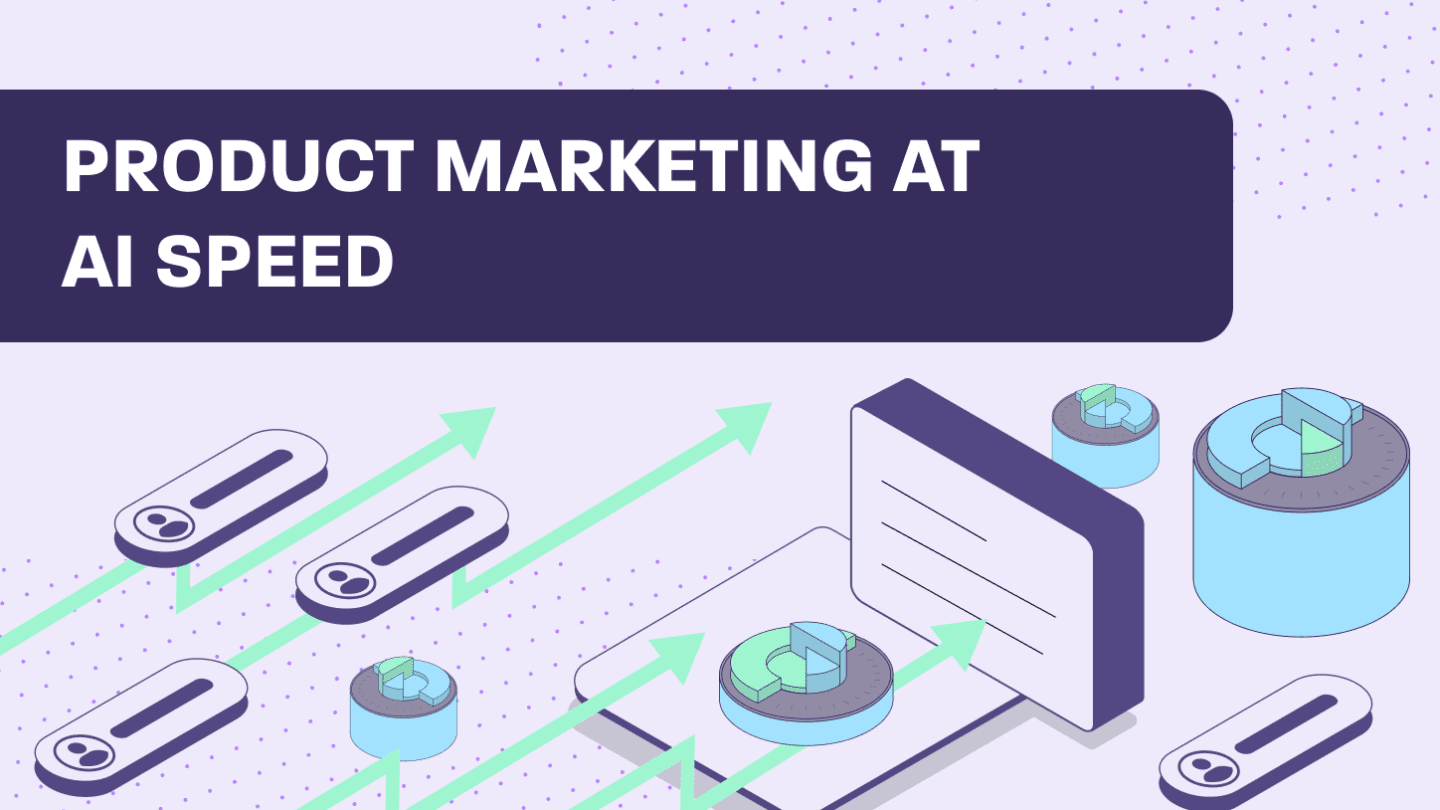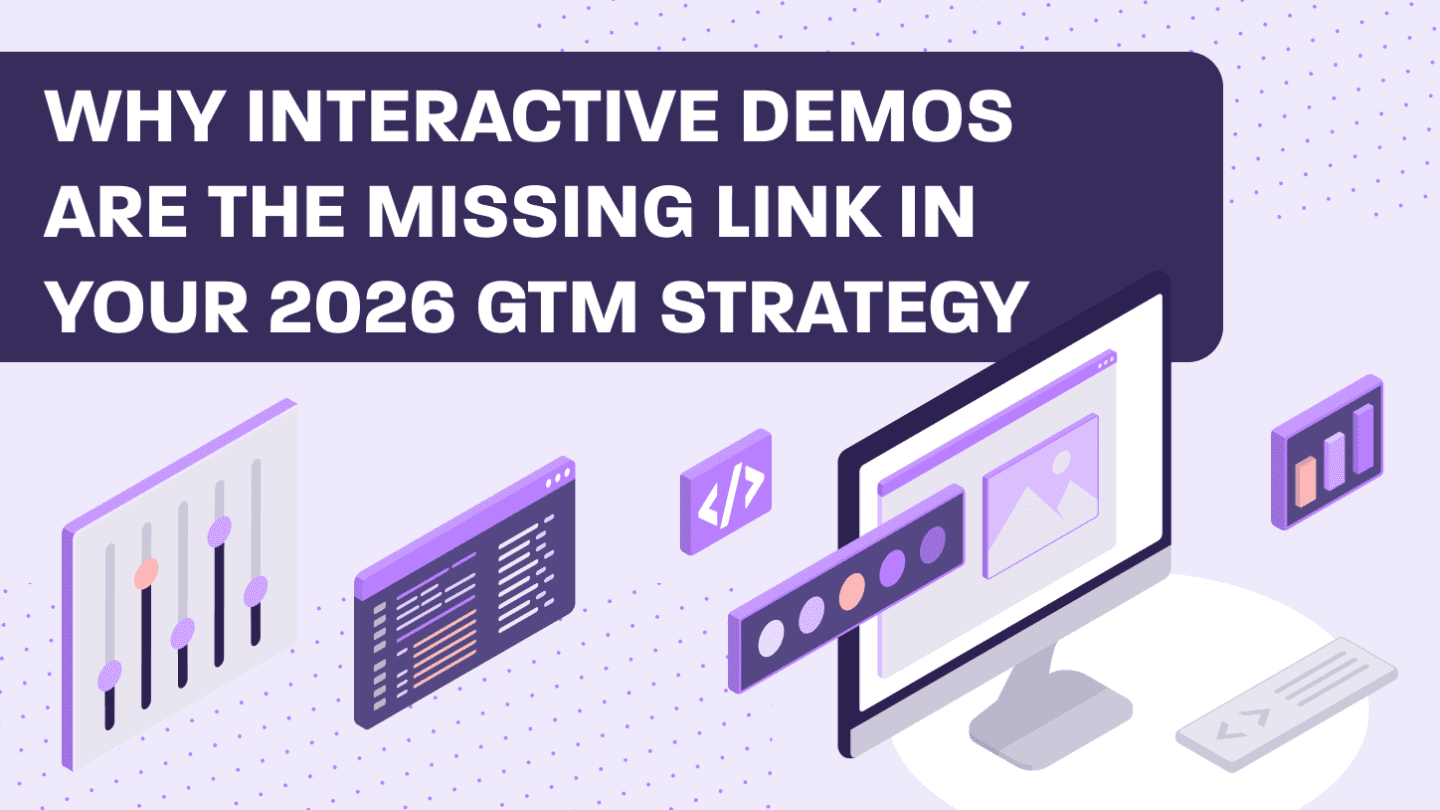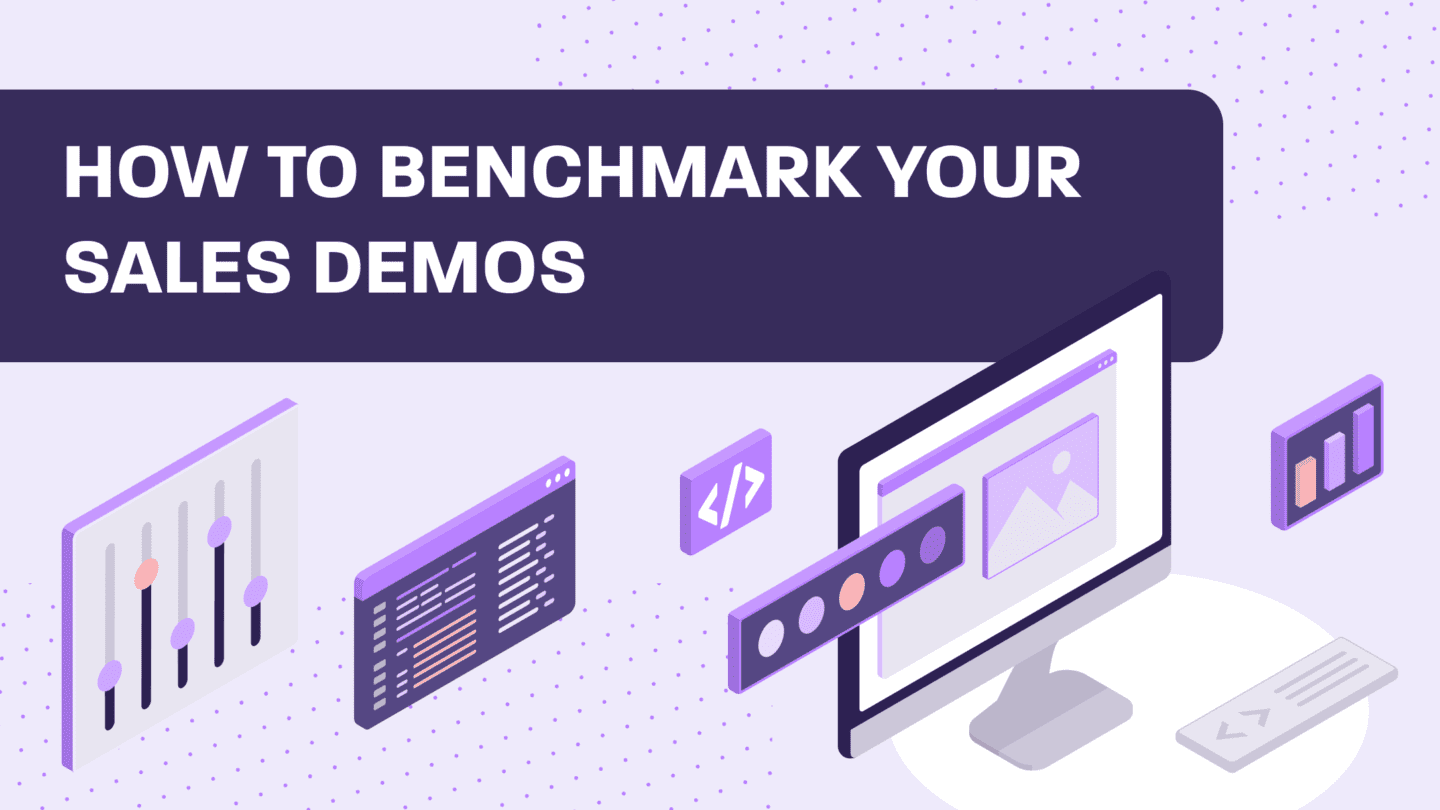Mind the gap!
No, we don’t mean when you get on the train.
But you should still watch out for that. Seriously, be careful out there friends!
So, which gap are we talking about? The Gap Selling sales methodology, of course!
This gap refers to the space between a prospect’s current state and where they want to be in the future.
This sales strategy, which was created by renowned sales instructor Keenan (yes, he actually has only one name), is being used more and more often by GTM teams to enhance the SaaS sales process, close more transactions, and build stronger, more enduring connections with prospects.
Sounds interesting, right? Glad you think so!
Because in this article, we’ll give you a Gap Selling summary and offer some examples that show how you can implement this approach into your SaaS sales strategy.
What is Gap Selling?
Gap Selling is a sales methodology that aims to identify a customer’s present status and progressively move them toward their ideal future situation.
Unlike other sales strategies, this methodology focuses on the problems a prospect currently has before getting into what the customer needs. Reps will delve deeply into the discovery process to understand the extent of a prospect’s pain points as well as where they want to be going forward.
Only then will a rep start discussing the prospect’s needs and possible solutions.
Examples of other SaaS sales methodologies include Conceptual Selling, Sandler Selling, and MEDDIC sales process.
Defining the current state, future state, and the gap
Before you even begin negotiating the deal, you need to understand the prospect’s different states.
Current state
Basically, the current state is what the prospect is experiencing right now. Here, we are focusing on what the prospect’s present environment is, what issues they’re facing, and how those issues affect the company.
Keenan breaks down a prospect’s current state into five key elements:
- The physical environment: This includes information about the customer’s physical location and the environment they work in.
- The problem: What problem is the customer experiencing? Reps need to understand the specific challenges a customer faces. And these challenges can be related to the business itself as well as technical factors.
- The impact: How is the issue affecting the business? It can also help to know the cost of not resolving the problem.
- The root cause: What is the underlying problem or imbalance that is causing the problem to exist? If you don’t understand the root cause, you won’t be able to show how you can solve the problem the prospect is facing.
- The emotions: What are the buyer’s feelings about this situation? It’s essential to determine how the current situation is impacting a prospect on an emotional level so you can better connect with them.
Future state
Once you know where the prospect is currently, it’s time to find out where they want to be, or not to be. That’s the question.
The prospect’s future state is all about the result they want to achieve. What do they want future processes to look like? What impact will addressing their issues have on the company?
It is your job to find out what a prospect needs to get to their ideal outcome.
The gap
Now, we have reached the main attraction.
The gap is the space or distance between where the prospect is now and where they aspire to be.
The greater the gap, the more motivation the buyer has to fill it by buying your SaaS product. So, you’ll need to make sure there is enough of a gap that needs to be filled by your product to warrant continuing the conversation.
Benefits of Gap Selling methodology
At the heart of it, Gap Selling is all about getting the details you need to cut through the noise of countless sales pitches and bridge the gap your prospect might not even be aware of. And this can be done by remaining in problem-centric mode.
When done right, Gap Selling can help you:
- Build relationships based on credibility instead of likeability
- Shorten the sales cycle
- Drive an increase in revenue
- Invest less effort in deals that won’t actually close
- Improve forecasting
Keenan is the first to admit that the methodology requires a lot of work. But the reward is worth it.
Essentially, this strategy allows you to sell the way people buy, which he says is a powerful tool to have.
And we couldn’t agree more.
How to use Gap Selling methodology
We’ve covered how using Gap Selling can benefit your sales efforts. But how can you actually implement this methodology into your sales strategy?
Well, we’re happy you asked!
Here’s a step-by-step outline that breaks down how to get started with Gap Selling:
1. Do your research before reaching out
What’s one of the biggest sales mistakes you can make? Reaching out to prospects before you really understand what issues they could be facing.
According to Keenan, one tried-and-true way to spot potential problems is by creating a problem identification chart before you reach out to customers.
This chart should include the problems your product can solve, the impact a customer’s problems have on the company, and what the root cause is.
Doing this brainstorming before you first interact with a prospect will better prepare you for your sales calls.

2. Gather the facts about your prospect
Once you’ve done your homework, it’s time for the first interactions with the prospect.
In this phase, you’ll want to gather any information you can to determine their current state.
The conversation should focus on learning about your prospect rather than pushing the product you’re selling. This way, you’ll come off as less pushy and be able to understand where the prospect is coming from.

3. Identify problems and root causes
You’ve gathered information about the prospect’s environment, but you’re not done yet!
This point in the Gap Selling process is focused on digging deeper into the customer’s problems and what’s really causing them.
When you understand the root cause, you’ll be better able to position your product as the ideal solution.
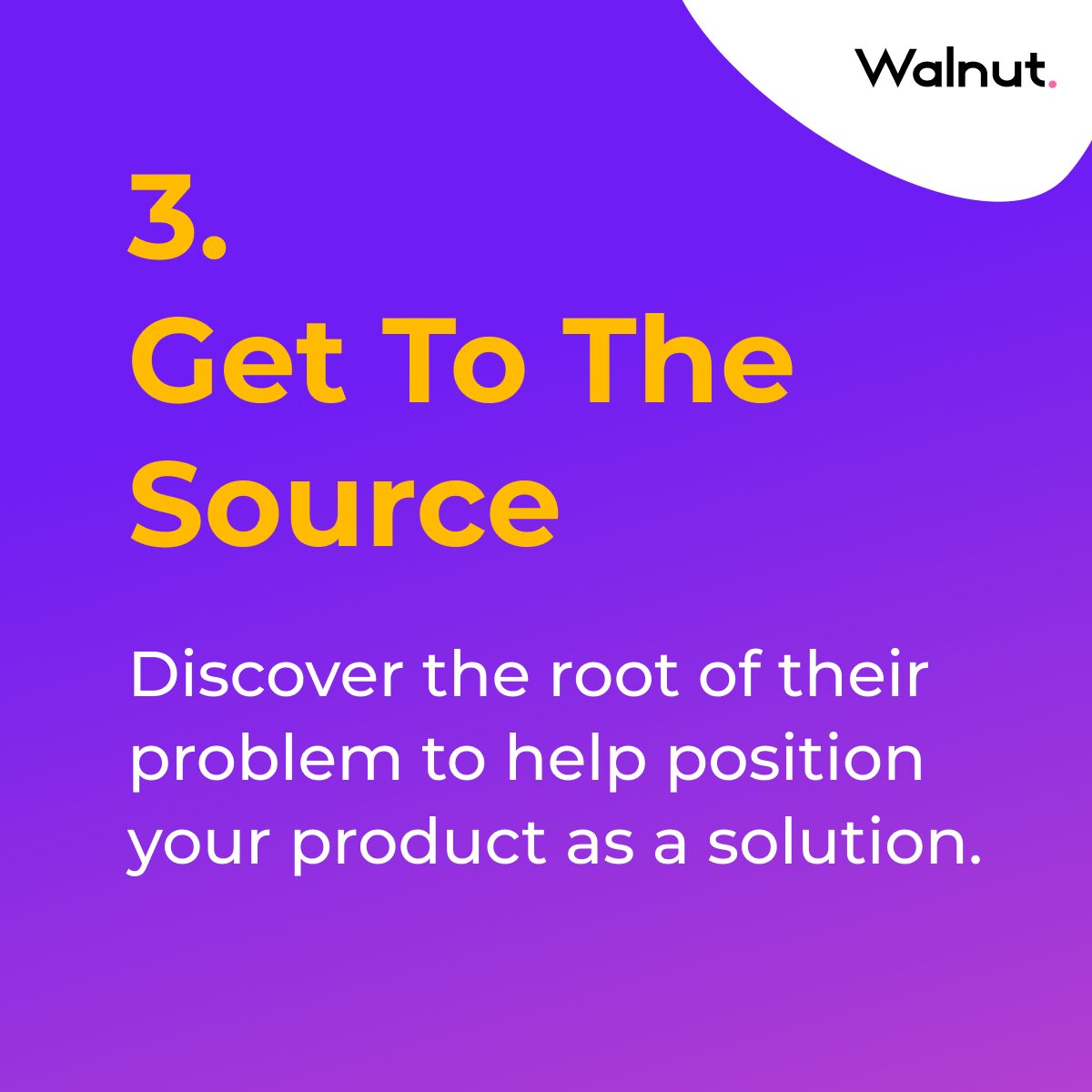
4. Understand the customer’s future state
Which specific outcomes are prospects dreaming about?
This is what you’ll need to pinpoint.
Finding out not only what outcomes they want to achieve, but also why customers want to achieve them, can help you better understand their key priorities.

5. Determine decision-making factors
We’ve all been there before.
When making a buying decision, you’ve most likely narrowed down your options based on specific factors.
Likewise, prospects are weighing factors like ease of use and price before they make a decision. Understanding what their specific criteria is will allow you to tailor your demos to show how the product fits their needs.
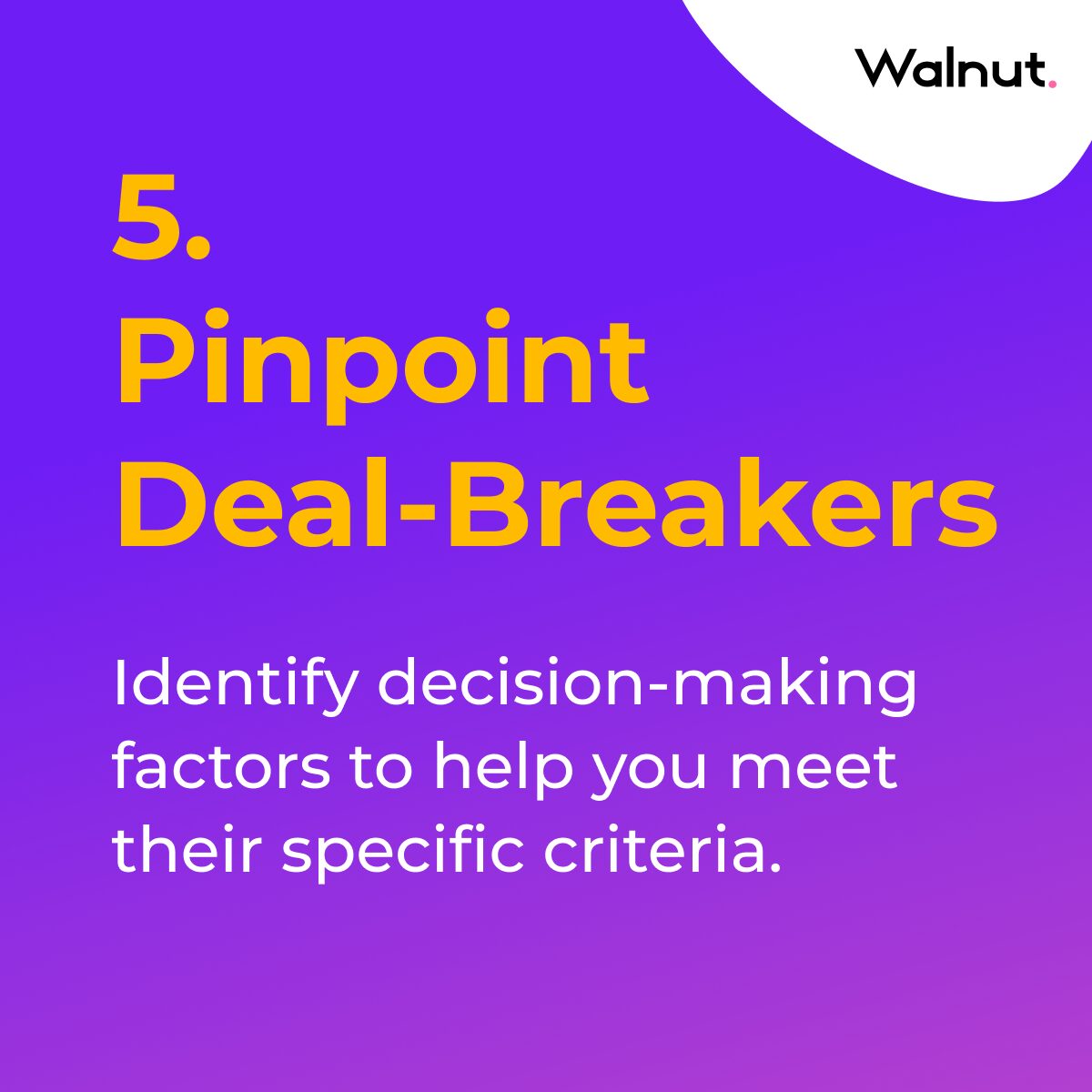
6. Close the gap
The moment you’ve all been waiting for!
After you’ve done all of the above, it’s time to close the gap!
One way to do this is by creating interactive and personalized product demos using a demo experience platform (eh hem, like Walnut) to show how your solution can bring a prospect to their ideal future state.

Gap Selling questions
If we could tell you every single question to ask to get all the information you’ll need, we would in a heartbeat.
But this methodology requires the rep to respond based on how the conversation flows. And the questions you ask need to be both direct and specific.
When deciding what to ask, you need to craft your questions to try and get information regarding:
- What problem is the prospect facing?
- What are the major pain points?
- What are the root causes of the problems?
- What impact does the problem have?
- What is the ideal future state?
- What solutions would solve the stated problems?
To be effective, the questions have to give you all the information you need to understand what the customer’s gap is and how your product can fill it.
Examples of Gap Selling
Now, we’ll try to put everything we’ve learned into practice.
Let’s say you are selling a demo experience platform. First, you need to get all the literal and physical information related to the prospect.
For that, you need to start with research. This will help you avoid wasting prospects’ time asking questions that you could answer on your own.
Here’s a few discovery questions you can ask:
- Do you use demos often?
- What type of software do you use for presentations or product tours?
- Who is involved in creating demo experiences?
Once you’ve asked the discovery questions, you’ll need to understand the main challenges.
Here are some examples of challenges a demo experience platform could address:
- We can’t always show the full value of our product to our prospects.
- It takes too long to create demos.
- We sometimes miss out on early prospect engagement opportunities.
- We have no way of gathering analytics from our demos to improve them going forward.
Great, now that you know what challenges they face, you can move on to the impact these problems have on the business. You’ll need to dig even deeper, emphasizing the gap that exists between where they are and what they want to achieve.
Going back to the example, here’s just a few negative impacts the above problems could have on a business:
- Our presales team struggles to make demos on time.
- Our current demos lack the wow factor that piques prospects’ interest.
- We have no way of embedding demos or sharing them easily, which causes friction whenever a custom demo is needed.
- We have not hit the sales goals we had in mind.
Once you understand the problems’ impact, the next phase is all about what the prospect is feeling regarding their problems.
These feelings could range from frustration or anger to indifference. So, it is important to empathize with the prospect.
When you empathize, it helps to move you to the next step: where you discover the root of the problem.
In our example, the salesperson knows that:
- Making demos is hard for the prospect.
- Sharing demos is difficult.
- Delivering a demo or product tour takes time, and so on.
Using that list of identified pain points, you can begin to pitch your solution as the best option. If customization options exist, you can provide solutions for specific needs as part of your overall offering.
If you and the prospect are not a good fit, this would also be when you realize it. It could be that the root problem is not something your SaaS product can solve. But this is okay.
Qualifying leads can help you focus on the buyers who are ready to sign on the dotted line.
The role of product demos in enhancing Gap Selling methodology
Gap Selling methodology is all about, well, selling the gap. And what better way to show a prospect how your product can fill the gap and meet their specific needs than by using a kickass product demo.
Using a demo platform like Walnut, you can create interactive demos to show prospects you really understand what the gap is and that you have the ability to fill it.
Some demo platforms also offer analytics to help you gain valuable insights about how effective your demo was in delivering that message.
Let’s put it this way. When you use interactive demos during the Gap Selling process, you’ll be well on your way to showing customers how your product can get them to where they ultimately want to be.
So what’s holding you back? Push the “Get Started” button at the top of your screen to start improving your SaaS sales today.

